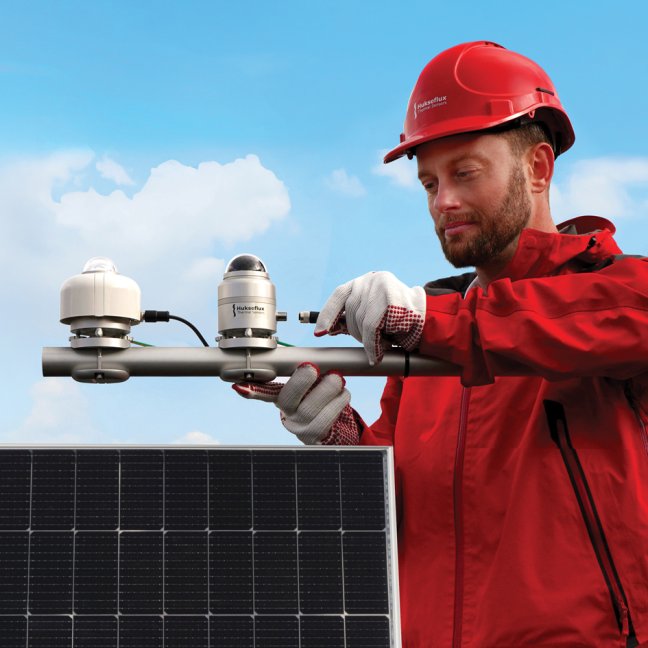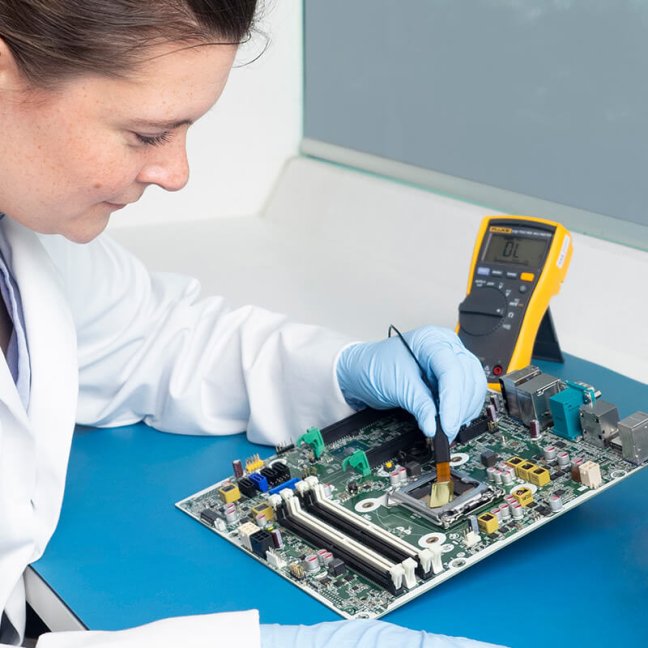SR30: Solar measurement in cold climates
Heated SR30 performs as well as externally ventilated pyranometers
The U.S. National Oceanic and Atmospheric Administration (NOAA) has conducted the De-Icing Comparison Experiment (D-ICE) for radiometers at their Barrow, Alaska Observatory. Hukseflux has supplied several instruments for this experiment, including an SR30*. A preliminary analysis by Hukseflux of the publicly available data confirms that SR30 is an excellent alternative to traditional, externally ventilated pyranometers, even in the extremely frosty Alaskan winter! SR30 provides similar performance at a lower cost, has lower power consumption and has lower maintenance requirements.
Introduction
Accurate measurement of solar irradiance with a pyranometer in cold climates is challenging. Figure 2 shows a typical problem in freezing conditions: ice accumulated on the dome surface scatters the incoming sunlight and renders the measured data unreliable. We call this a reduction in “data availability”. Dew, frost, rime and snow all have an adverse effect on data availability. Moreover, the extent of these effects can not always be estimated reliably from the data, possibly contaminating the data without you even knowing (shown in Figure 1). It is therefore important to use the right instrument in such harsh conditions.
The SR30 is Hukseflux’ response to these issues. In this white paper, we will use data provided by an independent cold climate test to confirm that the SR30 is an excellent alternative to the traditional solution with externally ventilated pyranometers. In addition, we will highlight several of SR30’s distinct advantages.
* The use of an instrument by NOAA in the D-ICE experiment does not constitute an approval or endorsement. Data used by Hukseflux are taken from NOAA as published on the NOAA website, which is part of the public domain. Conclusions in this report represent the opinion of Hukseflux only.
Find out more about D-ICE on the NOAA website: https://www.esrl.noaa.gov/psd/arctic/d-ice/
The problems with external ventilation
External heating and ventilation, the traditional solution to operating a pyranometer in cold climates, has several drawbacks. First, purchase of an external ventilation unit and the accompanying extra maintenance introduce additional costs. Second, power consumption is higher and the fan may freeze or get stuck. Finally, the application of external heating can lead to offsets for thermal sensors like pyranometers.
SR30, the first heated pyranometer
Hukseflux SR30 provides a next-level solution to pyranometer operation in cold climates. Internal Recirculating Ventilation and Heating (RVHTM) technology (Figure 3) provides the advantages of external heating without the drawbacks.
Heated air is ventilated between the inner and outer dome of the sensor, raising the sensor temperature evenly. This prevents ice accumulation while reducing thermal offsets caused by a dome-sensor temperature difference. Also, because the heated air is recirculated, the required heating power is much lower: 2 W versus a typical 10 W for external ventilation. This combination makes SR30 a very attractive and versatile sensor for operation in cold environments.

Case in point: D-ICE
To compare the performance of pyranometers in cold climates, the U.S. National Oceanic and Atmospheric Administration (NOAA) has conducted the De-Icing Comparison Experiment (D-ICE) at their Barrow, Alaska Observatory. Located more than 500 km north of the polar circle, this is an ideal testing ground for equipment in harsh, arctic conditions (see Table 1 for climate data).
Hukseflux has supplied a heated SR30 for this experiment, to be tested alongside several traditional, externally ventilated pyranometers. SR30’s performance has, in our opinion, been remarkable, as the following data will show.
| polar night | 18 NOV – 23 JAN |
| polar day | 11 MAY – 1 AUG |
| yearly rainfall equivalent | 115 mm (desert) |
| yearly snowfall | 960 mm |
| coldest month | February avg. low -29.1 °C |
| warmest month | July avg. high 8.3 °C |
| temperature extremes during D-ICE (SEP 2017 – APR 2018) | 9.5 °C on 3 SEP 2017 -38.4 °C on 28 FEB 2018 |
Read the full article here:
SR30: solar measurement in cold climates. D-ICE radiometer testing conducted by NOAA in Alaska (PDF)









